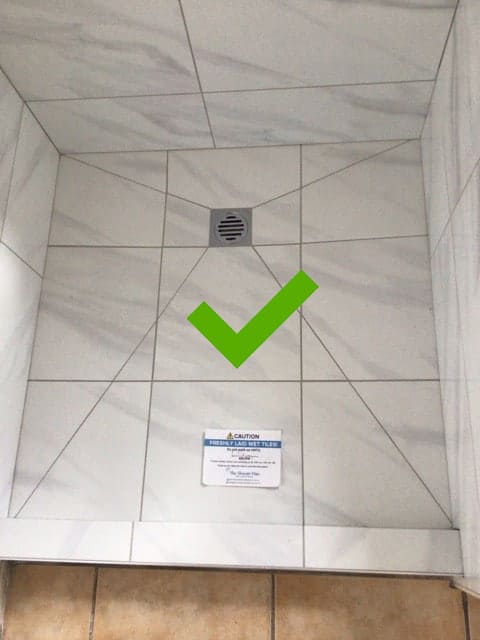Exactly How to Prevent Water Damage in Your Bathroom
Exactly How to Prevent Water Damage in Your Bathroom
Blog Article
Right here below you can find some outstanding data in regards to How to Prevent Bathroom Water Damage.

The washroom is incredibly vulnerable for damp accumulation as well as potential water damage due to the frequent use water in it. This short article uses simple evaluation strategies to help finding water damage dangers.
The constant use of water in the washroom makes it incredibly prone for moist build-up and also potential water damages. By inspecting it frequently, you can lower water related damages.
The complying with collection of evaluations is very easy to execute and must be done as soon as in every three months in order to keep your shower room healthy and to avoid possible water damages triggered by the bath tub, the shower, pipeline joints and plumbing, sinks, closets, and also the toilet
Do not disregard executing these inspections and be complete while executing them. Keep in mind that these easy assessments can conserve you a great deal of money by offering early indicators for water damages
Bath tub and Shower
The shower and tub need unique focus and also maintenance. Check the ceramic tiles as well as change if fractured. See to it that there is no missing out on cement between the tiles. Examine as well as replace split caulking at joints where the wall surfaces fulfill the flooring or the bath tub. Obstructed drains pipes and also pipes problems will prevent the bathtub from drying and may indicate major issues below the tub. Talk to an expert right away to avoid architectural damage. Focus on discolorations or soft areas around the bathtub walls as they may indicate an inner leakage.
Plumbing
Signs for water damages are tough to find because most pipes are installed inside the walls.
Pay special attention to flooring and walls moisture and discolorations as they might suggest an unnoticeable plumbing problem. Check moisture levels in adjoining rooms too.
Sinks and also Cabinets
Sinks and also closets are revealed to dampness and also moisture everyday as well as are typically overlooked. Inspect regularly under the sink and on the countertop above it. Fix any kind of drip in the catch as it might suggest drain problems. Browse the sink, sluggish draining pipes may show an obstructed drainpipe. Replace sink seals if they are cracked or loosened.
The Commode
The bathroom is a susceptible water junction. Examine the water lines and also search for leaks around the toilet seat, in the tube, as well as under the water storage tank. If you spot any indicators of wetness on the floor around the toilet, look for leaks in the toilet rim and also storage tank seals.
Understand that hanging toilet dish antiperspirants enhances the chances for obstructions.
Water Damage Signs In The Bathroom To Avoid Cleanup
Musty smell
This is one of the easiest signs to catch because musty smells are so odorous. The damp, earthy, moldy smell should be a big red flag. The smell will develop when moisture gets trapped in surfaces, and begins to facilitate mold growth. Leaking pipes under cabinets, inside walls, and behind shower fixtures will cause moisture to stay trapped and not dry, which will lead to mold growth and spread. As soon as you notice any musty smells in your bathroom, have it checked for hidden water damage and cleanup signs.
Visible mold
If the smell isn’t there to give it away, sometimes you will actually see mold growth. Finding mold in your bathroom is a serious problem, because mold is very harmful to your health. By the time mold growth is visible, it also means that water damage has already occurred and been present for some time. The only way the mold problem can be resolved is to find the source of the moisture and get it stopped. To safely and adequately remove mold, you need to have professionals handle the remediation. Do not waste any time in getting mold problems addressed, fixed, and sanitized so that you can protect you and your family from the many respiratory symptoms caused by mold exposure.
Damaged floors
Bathroom floors should be able to withstand some exposure to water while still remaining in good condition. However, when excess exposure or water leaks occur, they will begin to damage even the most water-resistant flooring. If you notice any cracking, bubbling, staining, or warping on your bathroom floors, there is probably a water leak somewhere causing the distortion. If you notice areas of the floor have become softer, or even have a spongy feeling, there is probably damage to the subfloor. Subflooring is typically made up of plywood. When plywood is exposed to water or moisture, it will absorb it. Once it has become saturated, the weight of the excess water will cause the wood to swell and soften. Check the floors in your bathroom frequently to catch any of these sings before they lead to damaged subflooring.
Changes on walls
When water leaks behind walls, it will cause changes in the drywall. Peeling plaster, blistering paint, and soggy wallpaper are all good indicators that excess water is building up behind the wall. Water leaking behind drywall will cause it to swell and be soft to the tough. If you start to notice gaps along the trim of your walls, or where tile meets the wall, it could also be a strong indicator that there is a leak behind the wall. Any changes, distortion, or damage on the walls should be evaluated as soon as you notice it to prevent further water damage and cleanup.

We hope you liked our topic about How to Repair and Prevent Bathroom Water Damage. Thanks so much for taking time to read through our post. Sharing is nice. Who knows, you could be doing someone a favor. We value reading our article about How to Prevent Bathroom Water Damage.
Book Service Report this page